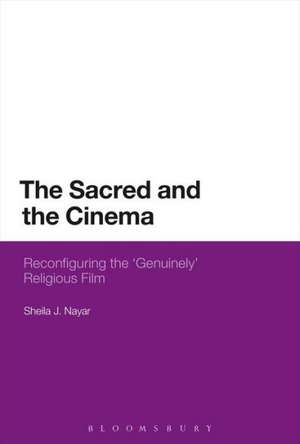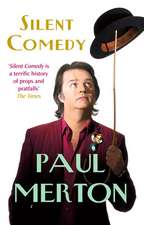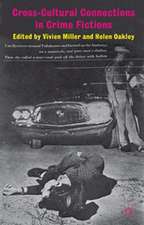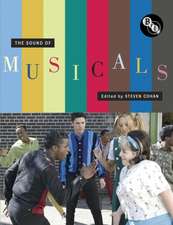The Sacred and the Cinema: Reconfiguring the 'Genuinely' Religious Film
Autor Dr Sheila J. Nayaren Limba Engleză Paperback – 6 noi 2013
| Toate formatele și edițiile | Preț | Express |
|---|---|---|
| Paperback (1) | 256.29 lei 6-8 săpt. | |
| Bloomsbury Publishing – 6 noi 2013 | 256.29 lei 6-8 săpt. | |
| Hardback (1) | 831.43 lei 6-8 săpt. | |
| Bloomsbury Publishing – 28 mar 2012 | 831.43 lei 6-8 săpt. |
Preț: 256.29 lei
Preț vechi: 294.78 lei
-13% Nou
Puncte Express: 384
Preț estimativ în valută:
49.04€ • 52.44$ • 40.89£
49.04€ • 52.44$ • 40.89£
Carte tipărită la comandă
Livrare economică 17 aprilie-01 mai
Preluare comenzi: 021 569.72.76
Specificații
ISBN-13: 9781472533029
ISBN-10: 147253302X
Pagini: 224
Dimensiuni: 156 x 234 x 11 mm
Greutate: 0.3 kg
Editura: Bloomsbury Publishing
Colecția Bloomsbury Academic
Locul publicării:London, United Kingdom
ISBN-10: 147253302X
Pagini: 224
Dimensiuni: 156 x 234 x 11 mm
Greutate: 0.3 kg
Editura: Bloomsbury Publishing
Colecția Bloomsbury Academic
Locul publicării:London, United Kingdom
Caracteristici
A pioneering contribution to on screen sacred revelations and images in the field of film theory.
Notă biografică
Sheila J. Nayar is Associate Professor of English and Communication Studies at Greensboro College, North Carolina, USA.
Cuprins
EpigraphPreface1. TacklingTranscendence: An Introduction2. A History of the Sacred as a Field of Study3. A History of the Sacred and the Cinema4. The Oral Contours of theReligious Spectacular5. The Alphabetically Literate Contours of the Transcendental Style6. Varietiesof Hierophanic Experience7. Technologizing Hierophany: Concluding RemarksNotesBibliographyIndex
Recenzii
Media are not only things that are plugged into a wall. Media are also spoken and scribbled, sung and swayed to. Nayar's The Sacred and the Cinema pick sapart the multi-mediated layers of film to show the embedded oral and literate dimensions, without which we cannot understand the sacrality of cinema. The book provides an excellent overview of studies in the subfield of "religion and film," just as it pushes forward to new directions.Film's own multimedia nature entails the need for a multimedia, and multisensual approach to it. Nayar amply provides this.
Sheila Nayar has shown how the art of film draws on the stylistic conventions of both orality and literacy, hence film narratives that convey the sacred may do so either through a mythological spectacle of abundance in melodrama, action, and characters, or through a literary narrative that points towards the "transcendental style" of private religious experience, ambiguity, and stillness. Furthermore, she acknowledges that there is no absolute division between the two modalities, as a film may partake of both, and in the end the viewers construct meanings from their own cultural, artistic, and religious sensibilities. This book advances discussion about Religion and Film beyond old dichotomies of "popular" and "art" films, or"sacred" and "secular" films, to show how the religious in film is constantly evolving and finding new forms of expression. As such, it is a significant contribution to new understandings of Religion and Film, and the typologies by which we approach their intersection.'
Sheila Nayar has shown how the art of film draws on the stylistic conventions of both orality and literacy, hence film narratives that convey the sacred may do so either through a mythological spectacle of abundance in melodrama, action, and characters, or through a literary narrative that points towards the "transcendental style" of private religious experience, ambiguity, and stillness. Furthermore, she acknowledges that there is no absolute division between the two modalities, as a film may partake of both, and in the end the viewers construct meanings from their own cultural, artistic, and religious sensibilities. This book advances discussion about Religion and Film beyond old dichotomies of "popular" and "art" films, or"sacred" and "secular" films, to show how the religious in film is constantly evolving and finding new forms of expression. As such, it is a significant contribution to new understandings of Religion and Film, and the typologies by which we approach their intersection.'













